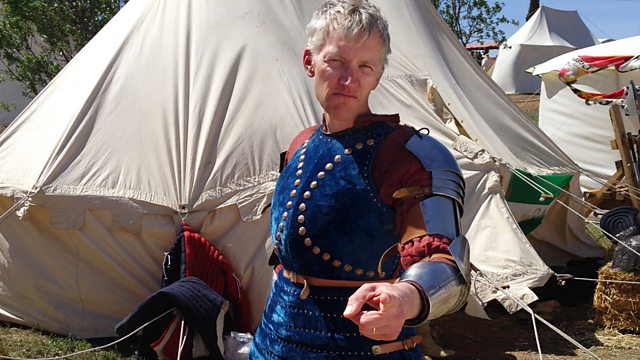07/05/2013
Helen Castor is joined in the studio by Professor Pauline Croft from the University of London, and archaeologist Dr Matt Pope from University College London.
Helen Castor is joined in the Making History studio by Professor Pauline Croft from the University of London and archaeologist Dr Matt Pope from University College London.
Tom Holland travels to Enniskillen in Northern Ireland where a road built for the G8 meeting in June sliced the top off a wetland landscape feature known as a crannog. Tom meets with Dr John O'Keeffe and Dr Nora Bermingham who explain how this man-made timber construction was inhabited for over one thousand years from the 7th Century onwards and that the artefacts discovered are changing the way we see Ireland in the early medieval ages.
Back in the studio, Dr Rowena Archer from Christ Church Oxford explains the political significance of a 15th Century child-bride Anne Mowbray who was married to one of the Princes in the Tower and who was at the centre of Edward VI's land-grab. Her remains were discovered by builders working on a bomb site in East London in 1964 at a time when rescue archaeology was unheard of.
Finally, in Edinburgh, Fiona Watson meets up with Dr Alan MacDonald from the University of Dundee who explains the impact on the Scottish Parliament of James 1st's move south to London to become James VI in 1603.
Contact the programme: making.history@bbc.co.uk
Produced by Nick Patrick
A Pier production for ±«Óãtv Radio 4.
Last on
Programme Guests
Enniskillen Crannog
Tom Holland travels to Enniskillen in Northern Ireland where a road planned for next month's G8 conference sliced through the top of a wetland man-made landscape feature known as a crannog.
Ìý
Tom hears from Dr John O'Keeffe of the Northern Ireland Environment Agency and excavation director Dr Nora Bermingham that the artefacts from this site are changing our understanding of Ireland in the 7th Century.
Ìý
Duchess in a building site
In 1964, before rescue archaeology, builders working on a bomb site in London's East End came across the lead coffin of a 15th Century child-bride Anne Mowbray.
Ìý
from Christ Church Oxford explains that Anne was central to the politics of the court of Edward VI.
Ìý
One Crown – Two Parliaments
Fiona Watson in Edinburgh meets with from the University of Dundee to discover what the impact of James 1st's move south to become James VI of England had on the Scottish Parliament.
Ìý
(University of St Andrews)
Ìý
Broadcast
- Tue 7 May 2013 15:00±«Óãtv Radio 4
Podcast
-
![]()
Making History
Popular history series where the past connects with the present.


